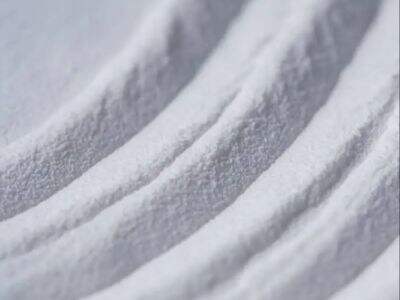I dag taler vi om to forskellige typer magnesiumoxid: let og dødbrændt. Det kan måske lyde som mærkelige navne, men de skyldes faktisk, hvordan Dafei Magnesiumoxid fremstilles og hvad den bruges til.
En indsigt i kemi for let og dødbrændt magnesiumoxid
Lad os starte med grundlæggende – hvad er magnesiumoxid? Hvid magnesia er en pulverformet forbindelse bestående af magnesium og oxygen. På grund af sin modstandsevne mod høje temperaturer og kemisk stabilitet anvendes den i industrielle processer og produkter.
Generelt dannes let magnesiumoxid ved kalcinering af magnesiumcarbonat. Dette skaber et let og luftigt pulver, som ofte anvendes i produkter såsom gummi, plast eller keramik. Derimod fremstilles dødbrent magnesiumoxid ved kalcinering af magnesiumcarbonat ved endnu højere temperaturer. Dette resulterer i et tæt og stabilt pulver, der blandt andet anvendes i stålproduktion og miljøapplikationer.
Om forskellene mellem let og dødbrent MgO
Disse forskelle i produktionen af let og dødbrent magnesiumoxid fører til forskellige egenskaber og anvendelser. Let magnesiumoxid er en højt reaktiv form af Højrein magnesiumoxid og anvendes almindeligt som katalysator i kemiske reaktioner. Det sættes også stor pris på for at forbedre de dårlige mekaniske egenskaber hos materialer såsom plast og gummi.
På den anden side er dødbrændt Mg-oxid efterspurgt på grund af sin fremragende termiske stabilitet og korrosionsbestandighed. Derfor anvendes det i industriovne og kalcineringsugler. Desuden anvendes dødbrændt magnesiumoxid bredt i forbindelse med miljøfaciliteter såsom spildevandsbehandling og faldgasdesulfurering.
Betydningen af processeringsmetoderne i produktionen af forskellige magnesiumoxider
Dens procesbehandling vil derfor være meget vigtig for de endelige egenskaber og til de mulige anvendelser. For eksempel let ren magnesium oxid fremstilles i henhold til en kalcineringsproces, hvilket resulterer i et fint og reaktivt pulver. Det er derfor nyttigt i applikationer, hvor en hurtig reaktion er påkrævet.
Ved at øge temperaturen eller forlænge opvarmningstiden opnår man dødbrændt magnesia. Påstanden er, at dette giver et mere stabilt og mindre reaktivt materiale, der er velegnet til anvendelse hvor visse holdbarhed og modstandsevne over for hårde forhold er nødvendige.
Når man tager højde for LMO's og DMO's termiske stabilitet og reaktivitet
Varmestabiliteten og reaktiviteten af let og dødbrent magnesiumoxid er en af de primære forskelle. Kalcineret let magnesiumoxid er meget aktiv og anvendes nogle gange i situationer, hvor en ekstremt hurtig og kraftig kemisk reaktion er påkrævet.
Dødbrent magnesia derimod er karakteriseret ved sin termiske stabilitet og kemiske modstandsevne. Det er netop dette, der gør det til en vigtig komponent i produkter, der vil blive udsat for høje temperaturer og barske miljømæssige forhold uden at degradere eller bryde sammen.
Hvilken type magnesiumoxid skal man vælge til industrielle anvendelser?
Ved valg mellem letbrændt magnesiumoxid og dødbrendt magnesiumoxid til en bestemt industriapplikation, skal faktorer som stabilitet og reaktivitet samt anvendelse tages i betragtning. Anvendelsen af let magnesiumoxid omfatter forhold, hvor en hurtig og kraftig reaktion er påkrævet, såsom katalysatorer og kemiske tilsatsstoffer.
Table of Contents
- En indsigt i kemi for let og dødbrændt magnesiumoxid
- Om forskellene mellem let og dødbrent MgO
- Betydningen af processeringsmetoderne i produktionen af forskellige magnesiumoxider
- Når man tager højde for LMO's og DMO's termiske stabilitet og reaktivitet
- Hvilken type magnesiumoxid skal man vælge til industrielle anvendelser?


